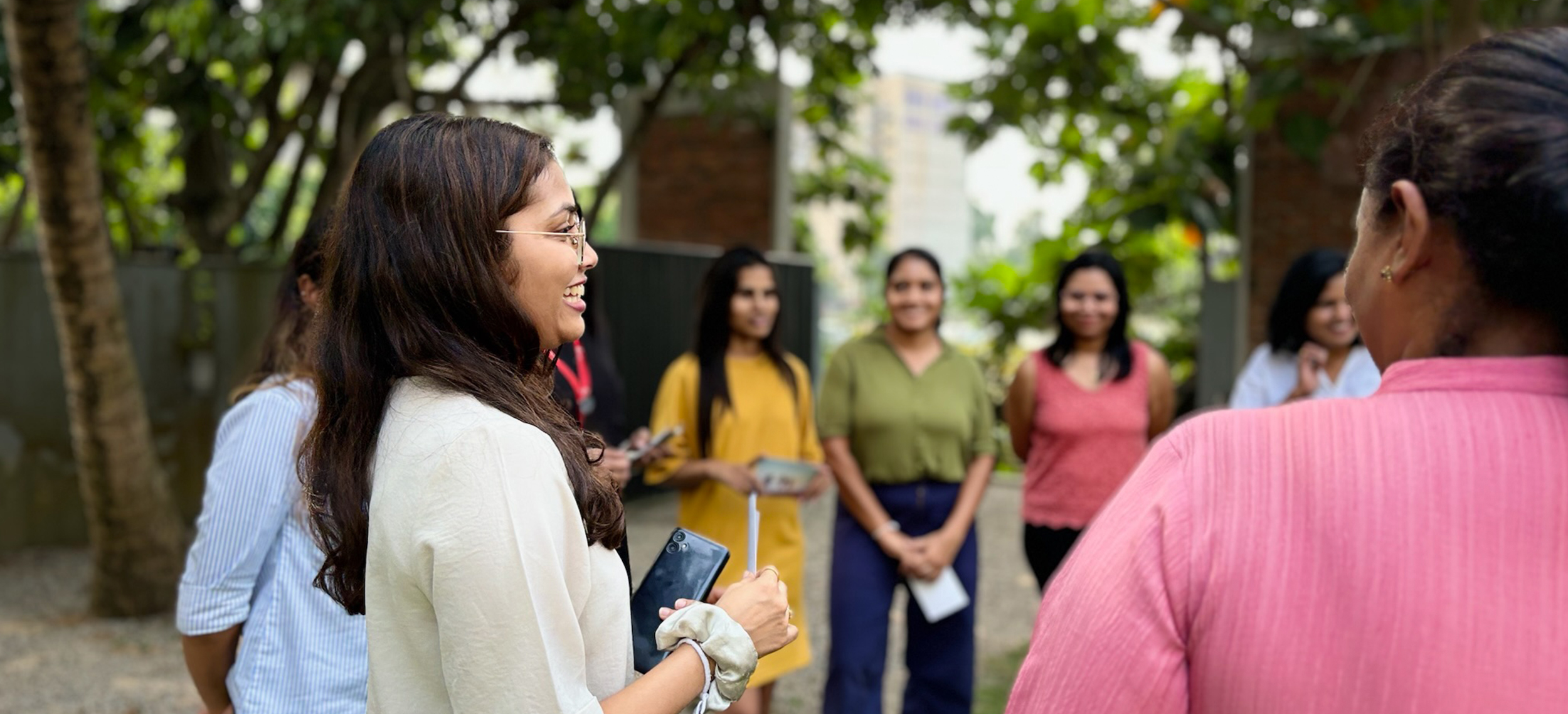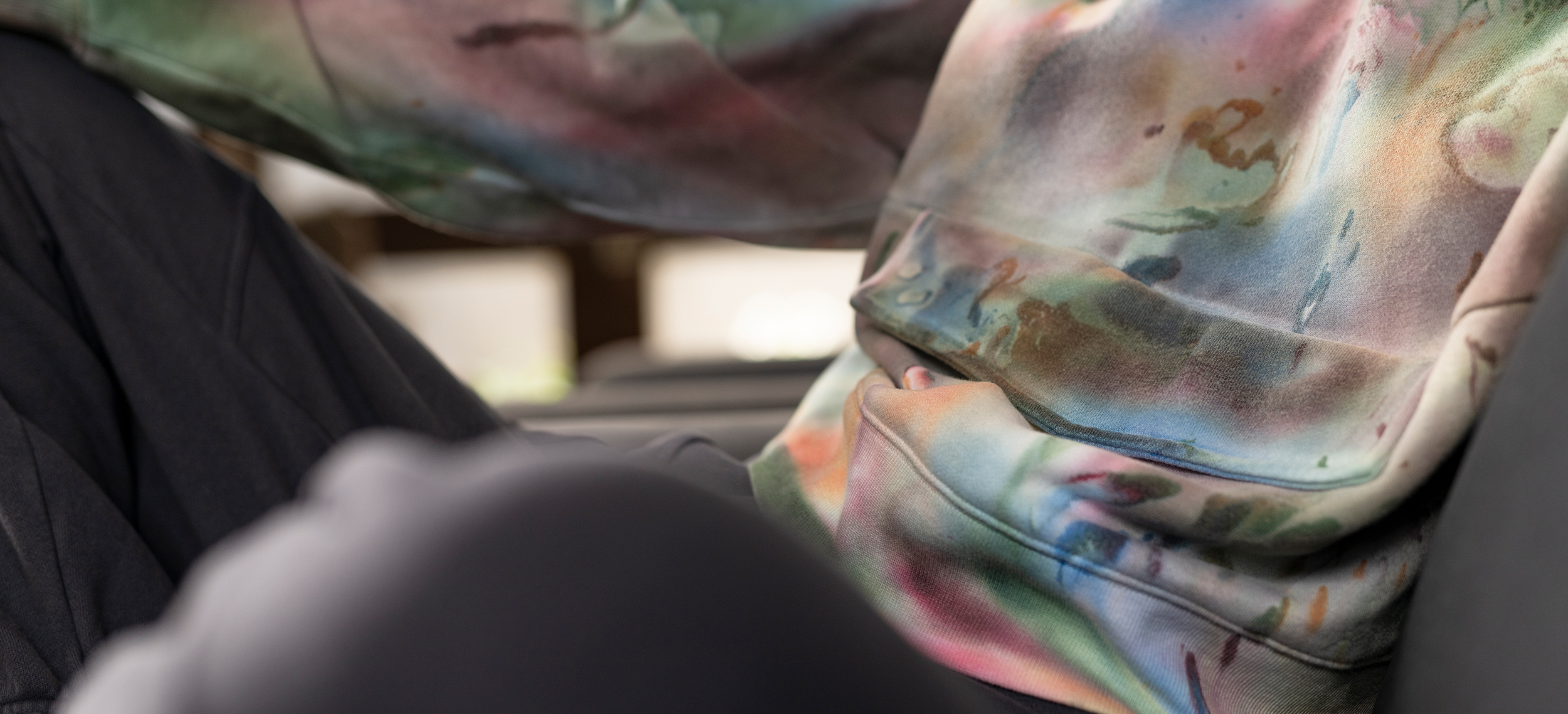Plastic is Out. Bio-Based Raw Materials are Charting the Future of Sustainable Apparel.
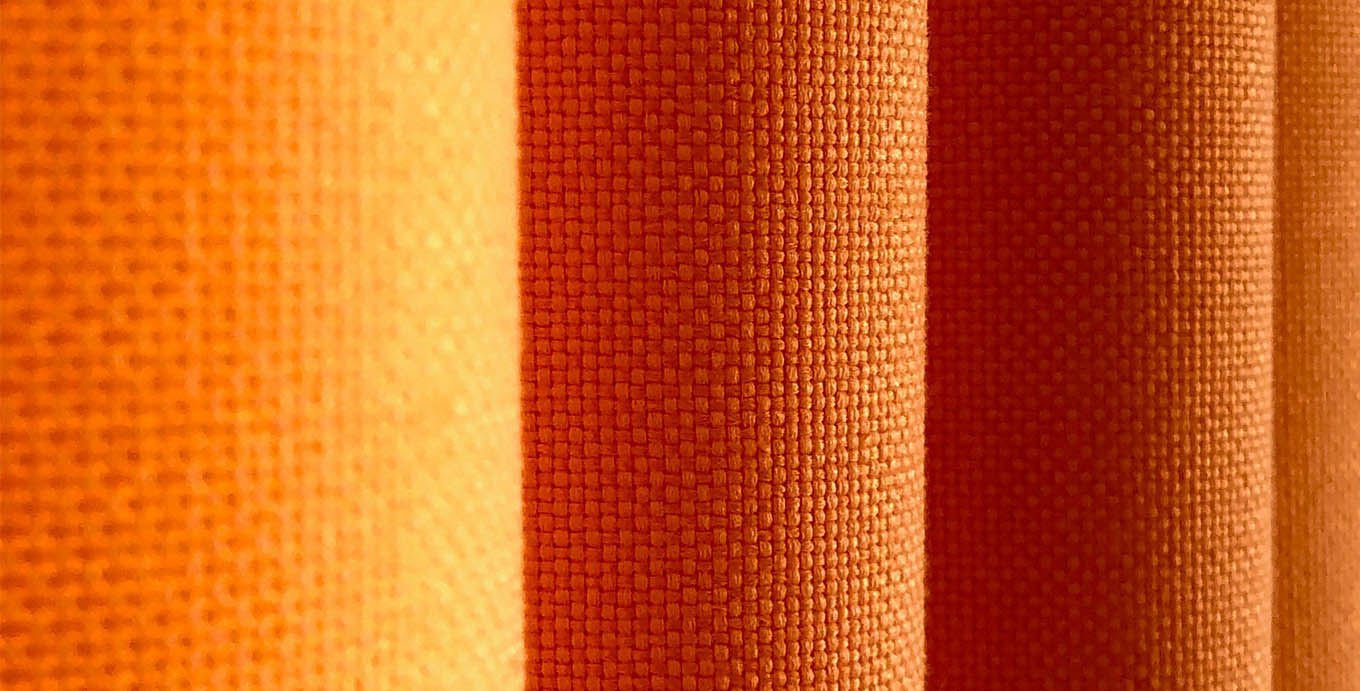
Ever wondered about the impact your wardrobe has on the planet? The appeal of stylish and functional clothing is hard to deny, however there is a growing concern for the fashion industry’s impact on the environment. Striking a balance between these two aspects remains a significant challenge. The finger has been pointed at petroleum-based synthetic fibers, but what alternatives are there and which synthetic fibers are more sustainable?
Brandix is working the problem by engineering a new generation of textiles, which are built around bio-based materials. Clothes that are durable, high performing, and made from renewable resources. This innovative approach offers a sustainable alternative to traditional synthetic fibers, reducing reliance on fossil fuels.
What are bio-based raw materials?
Bio-based raw materials come from biological sources, like plants, animals and microorganisms; most frequently used are natural fibers, wood, sugar, starch and plant oils.
This is what makes them so promising:
- Renewable Resources: Bio-based materials are derived from sources that can be replenished, unlike fossil fuels used in conventional synthetic fibers. This reduces dependence on non-renewable resources and promotes sustainable fashion.
- Reduced Environmental Impact: Production of bio-based materials often requires less energy and generates fewer greenhouse gas emissions compared to traditional synthetic fibers. This translates to a smaller carbon footprint for apparel manufacturing companies.
- Biodegradability: Many bio-based materials are biodegradable, meaning they will decompose naturally at the end of their lifecycle. This helps to minimize waste and microplastic pollution associated with synthetic textiles that can take hundreds of years to break down.
- Performance Potential: Bio-based materials can be processed to offer similar performance characteristics to traditional synthetic fibers, such as durability, moisture-wicking, and wrinkle resistance. This ensures functionality alongside environmental benefits.
Is fashion embracing a greener future?
When it comes to the buying habits of customers, a recent study by Nielsen sends a clear message: sustainability matters. Fueled by an increase in environmental awareness, especially among young people, attitudes are moving away from fast fashion and towards more eco-friendly, sustainable and ethical clothing options. Industry data reflects this shift, with the sustainable fashion industry currently valued at over $6.5 billion. This figure is projected to climb steadily in the coming years; with analysts predicting the market will reach $10.1 billion by 2025, with further growth to $15 billion by 2030.

A majority of global consumers report a willingness to change their consumption behavior to reduce their environmental impact. They are increasingly interested in purchasing, and sometimes paying a premium for, products that benefit the environment.
- 73% of global consumers say they would be likely to change their consumption patterns to reduce their impact on the environment.
- 41% of consumers across the globe, express a strong willingness to pay more for products that contain natural or organic ingredients.
Through years of dedicated research and development, both in-house and in collaboration with external experts, Brandix has identified the potential benefits of castor oil as a viable and renewable resource. By optimizing its properties for various textile applications, we are able to provide a valuable solution to one of fashion’s biggest quandaries. With the help of a small but mighty castor seed, Brandix is spearheading the shift towards a more sustainable future in apparel manufacturing.
Emerging trends in bio-based materials
The sports world thrives on innovation, constantly pushing the boundaries of performance and comfort. From moisture-wicking jerseys to high-performance running tights, polyester and polyamide have revolutionized athletic wear. However, this reliance on synthetic fibers comes at a significant cost to the planet: plastic pollution. As awareness of the environmental impact of the fashion industry grows, a crucial question emerges: Is there a way to retain all the features we love about sportswear, without adding more plastic to the natural environment? The answer may lie in a humble semi-woody small tree.
The castor bean plant, Ricinus Communis, thrives in arid regions, withstanding long periods of drought. This fast-growing crop does not compete for arable land destined for agriculture. It also requires minimal water for cultivation, which adds to its sustainability as a renewable resource. This unique set of characteristics makes castor oil a particularly promising resource for the fashion industry, which is under immense pressure to minimize its environmental footprint.
Brandix, with a long history of proactive environmental action focusing on air, water, and earth, has taken a monumental step forward. With careful consideration to balance manufacturing, environmental, and social factors, we have identified the importance of new synthetic fiber which is a marriage of high performance and environmental consciousness.
The building block of this innovative high-performance fiber is a biopolymer formed within the castor seed. The high-tech textile fibers are processed into high-quality fabrics lending maximum comfort to the wearer. This versatile material is suitable for a range of textile uses, with particular advantages in the sportswear sector.
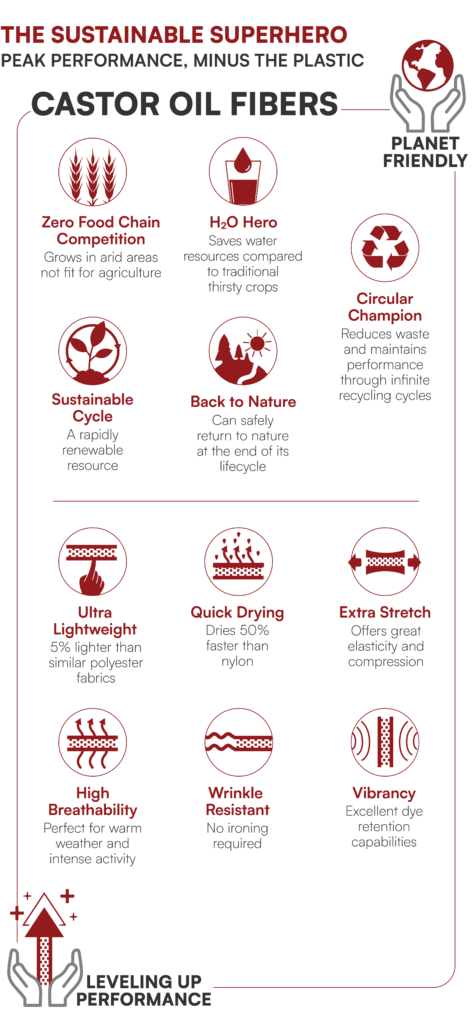
“Traditional synthetic fabrics like, polyester and nylon only offer the ability to be recycled once. A second and third attempt at recycling degrades the strength of the fibers and compromises their viability. This leads to plastic waste, which is not a desirable outcome. We are working on new raw materials that can potentially offer a significant advantage: infinite recyclability. This means the material can be recycled repeatedly without losing its performance qualities. This breakthrough will not only reduce reliance on virgin resources but also minimize textile waste in the long run,” says Dinush Wimalachandra, a key member of the Brandix innovation team.
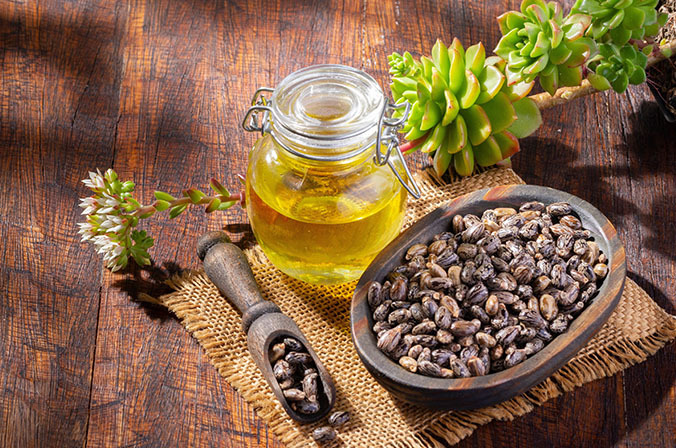
How do we overcome the hurdles of integrating bio-based raw materials?
At Brandix, we understand the urgency of moving towards a more sustainable future, however, transitioning to bio-based alternatives presents its own set of challenges.
Investing in the future: Unlike easily accessible synthetic materials, working with bio-based fibers requires significant investment in in-house research and development. Resources have been dedicated to understanding the properties of this new material, optimizing processing techniques, and ensuring compatibility with existing machinery. It is a time-intensive process that also demands considerable financial investment. But we firmly believe in the potential of these materials in transforming the industry.
Adapting for innovation: The textile machinery we use today is not readily compatible with bio-based fibers, yet we are committed to overcoming this hurdle. Our engineering team is exploring the options of adapting existing infrastructure and even developing or sourcing entirely new equipment to ensure the efficient and high-quality production of bio-based textiles.
Beyond the machinery: Challenges extend beyond the physical setup. Traditional formulations of dye sometimes interact poorly with the new fibers and do not always deliver the desired results. Formulating dyes and other finishing agents specifically for these bio-based materials presents an additional obstacle. We are in the process of researching and developing new formulations to achieve optimal results.
Uncertain return on investment: The long lead time and high upfront costs associated with in-house development is always a gamble when it comes to a new product. The uncertainty regarding return on investment is factor that must be taken into account.
Outside expertise: The market for sustainable textiles is still evolving, and consumer adoption might not be immediate. Brandix embraces open innovation by partnering with external parties to accelerate the progress of the entire sector through shared expertise.
Staying ahead in the game: While industry collaboration fuels progress, protecting our intellectual property remains essential in this fast-paced landscape. Innovation overlaps occur often, making IP a vital tool to maintain a competitive advantage.
“Our commitment to overcoming the challenges of developing bio-based raw materials is not just about innovation, it is also a true reflection of our other core values: sustainability and agility. We are pioneering cutting-edge solutions that address the environmental impact of traditional textiles, while maintaining the high standards for which our company is known,” says Wimalachandra, who also serves as General Manager for Product Solutions, Research and Development at Brandix.
A better world is circular
The future of fashion is no longer a runway filled with fleeting trends, but a circular path towards a healthier planet. By making informed choices and supporting these innovative solutions, we become active participants in shaping a more sustainable future. Every purchase of a bio-based garment will be more than just a new addition to our wardrobe; it can be a vote for cleaner air, healthier oceans, and less plastic in landfills.
But the benefits extend far beyond environmental responsibility, bio-based materials hold the promise of pushing the boundaries of technology and the potential to experience a fashion revolution. Let us embrace the chance to explore new textures, discover unexpected functionalities, and redefine what it means to look and feel good.
Together, we can rewrite the narrative of the fashion industry. We can move beyond the “take-make-dispose” model and embrace a circular future where high performance and environmental awareness go hand in hand. In this future, waste becomes a relic of the past, replaced by a system of continuous renewal and responsible consumption. The choice is ours, and the future beckons. Are you ready to join the movement?
Authored by Kamaya de Soysa
